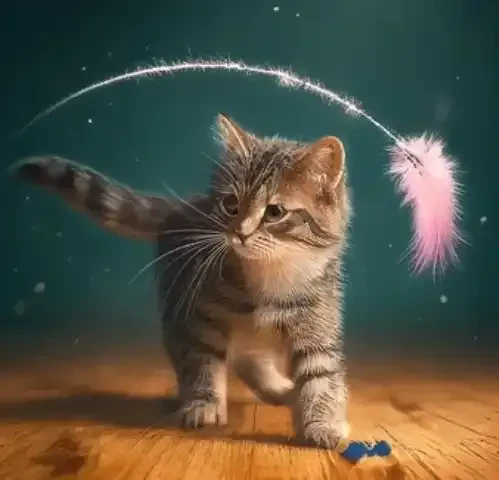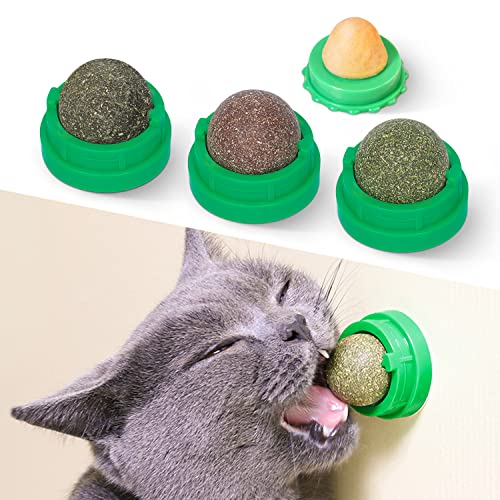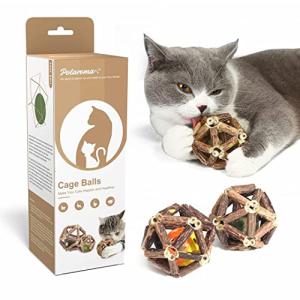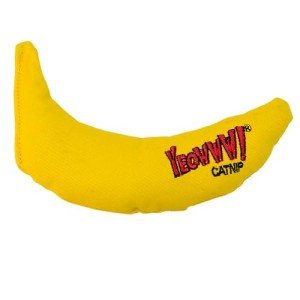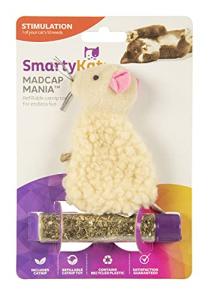Picture this: your cat is sprawled on the sofa, seemingly asleep for the tenth hour that day. Or perhaps you're constantly battling a furry whirlwind who shreds your curtains, attacks your ankles, and generally wreaks havoc on your home. Maybe your feline friend is simply...bored. A lack of enrichment can manifest in many ways, from lethargy and excessive grooming to destructive behaviors and even health problems. It's a surprisingly common issue, and one that's often overlooked by cat owners.
This guide is dedicated to solving that problem. We're going to explore the essential world of cat enrichment, providing you with a comprehensive list of must-have toys and supplies. We'll cover everything from interactive playthings to solo entertainment options, climbing structures, and even DIY ideas to keep your cat stimulated, happy, and healthy. We will be defining enrichment, listing toy categories, looking at other supplies and rounding it off with some easy DIY projects.
So, what exactly is feline enrichment? Simply put, it's about creating an environment that stimulates your cat's physical and mental well-being. It involves providing opportunities for them to engage in natural behaviors, like hunting, playing, exploring, and problem-solving. Think of it as creating a mini-jungle gym and mental workout for your indoor cat.
A truly enriched environment for a cat addresses several key areas, often referred to as the pillars of feline environmental enrichment. First and foremost is safety and security. A cat needs to feel safe and secure in their environment, with predictable routines and access to resources (food, water, litter box) without competition or threat. Sensory stimulation is also crucial. Cats experience the world through their senses, so providing opportunities to engage their sight, sound, smell, taste, and touch is vital. Predatory play is a fundamental need for cats. They are natural hunters, and providing outlets for them to stalk, chase, pounce, and "kill" (even if it's just a toy mouse) is essential for their well-being. Social interaction, whether with humans or other friendly cats (if appropriate), can also be a valuable form of enrichment. Finally, exploration and problem-solving opportunities keep a cat's mind sharp and engaged. This could involve climbing, exploring new spaces, or figuring out how to get a treat out of a puzzle toy.
The benefits of providing adequate enrichment are numerous and far-reaching. Enrichment reduces stress and anxiety, preventing boredom-related behaviors like excessive grooming, destructive scratching, and even aggression. It helps with weight management and improves physical fitness by encouraging activity. It also enhances cognitive function, keeping your cat's mind sharp and alert. And perhaps most importantly, it strengthens the bond between you and your cat, creating a more positive and fulfilling relationship.
Let's delve into the exciting world of enrichment toys, starting with interactive toys. These are toys that involve playtime between you and your cat, fostering a strong bond and providing valuable exercise. Wand toys are a classic for a reason. They come in countless variations: feather wands, ribbon wands, string wands, and those with a variety of enticing attachments. The "FlutterFly Wand" (fictional product), for example, features interchangeable butterfly and feather attachments, allowing you to vary the "prey" and keep your cat engaged. The key to using wand toys effectively is to mimic the movement of real prey. Vary the speed and direction, let the toy dart and flutter, and crucially, allow your cat to "catch" the toy periodically. This satisfies their hunting instincts and prevents frustration.
Laser pointers can be another source of intense chase stimulation, particularly for high-energy cats. However, they come with a caveat. Because the cat can never actually "catch" the laser dot, it can lead to frustration for some individuals. It's also crucial to use laser pointers safely, avoiding shining them directly into the cat's eyes. The "SafeChase Laser Pointer" (fictional product) addresses these concerns with a low-intensity laser and an automatic shut-off feature to prevent prolonged use. Always end a laser pointer session by directing the dot onto a physical toy, like a stuffed mouse, that the cat can catch, providing that crucial sense of accomplishment.
Some cats surprisingly enjoy playing fetch, just like dogs! For these feline retrievers, small, lightweight toys are ideal. Crinkle balls, like the "WhiskerWhirl Crinkle Balls" (fictional product), are particularly appealing due to the auditory stimulation they provide. Soft, plush mice are another good option. Start by tossing the toy a short distance and use positive reinforcement, like praise or a treat, when your cat brings it back.
Moving on to solo play toys, these are essential for keeping your cat entertained when you're not available for interactive play. Puzzle toys are fantastic for providing mental stimulation and problem-solving challenges. They range from simple sliding puzzles, like the "TreatTrek Sliding Puzzle" (fictional product), where the cat has to move pieces to reveal hidden treats, to more complex, multi-level puzzles. Treat-dispensing balls, such as the "BrainyBall" (fictional product), encourage activity and slow down eating, making them ideal for cats who tend to gulp their food. When introducing puzzle toys, start with easier options and gradually increase the difficulty as your cat learns. Supervise their initial use to ensure they understand how the toy works.
Ball and track toys tap into a cat's natural instinct to chase and bat at moving objects. These toys typically feature a circular or multi-tiered track with one or more balls that the cat can swat and chase. The "Whirlwind Track Tower" (fictional product) offers three levels of ball-chasing fun, keeping cats entertained for extended periods. Choose a sturdy design and ensure the balls are large enough to prevent any choking hazards.
Crinkle and noisy toys provide auditory stimulation that can instantly grab a cat's attention. These toys, like the "CrinkleCraze Ball Set" (fictional product), are great for cats who enjoy batting, pouncing, and generally making a bit of a racket. Toys with bells can also be appealing, but use them with caution, as some cats may be startled by the sound. Always supervise play with any toy that has small parts that could potentially be detached and swallowed.
Plush toys, both with and without catnip, offer a different kind of enrichment. They can be comforting for some cats, providing a soft object to cuddle with. They can also satisfy a cat's "killing" instincts, as they often enjoy kicking, biting, and "disemboweling" their plush prey. The "KickerKing Plush Mouse" (fictional product) is a durable option designed specifically for this type of play. Choose toys made from sturdy materials, and always supervise play to prevent your cat from ingesting stuffing or small parts. If your cat is sensitive to catnip, choose a catnip-filled toy, otherwise you can choose toys without.
Electronic or motion-activated toys offer a more hands-off approach to enrichment. These toys, such as the "MotionMouse AutoPlay" (fictional product), provide unpredictable movement that can keep cats entertained for longer periods. However, it's important to consider battery safety and the potential for overstimulation or fear in some cats. Always supervise the initial use of any electronic toy.
Climbing and scratching structures are absolutely essential for a cat's well-being. They provide vertical space, which is incredibly important for cats, allowing them to survey their territory from a safe vantage point. They also offer designated scratching surfaces, redirecting this natural behavior away from your furniture. Cat trees and condos come in a vast array of sizes and configurations. The "SkyHigh Cat Condo" (fictional product), for example, features multiple levels, scratching posts, perches, and even a cozy enclosed sleeping area. When choosing a cat tree, consider your cat's size, age, and activity level. Ensure the structure is sturdy and stable, with adequate height and plenty of scratching surfaces.
Scratching posts and pads are another must-have. They provide an outlet for scratching, which is crucial for maintaining claw health and marking territory. Vertical posts, like the "SisalScratch Supreme" (fictional product), should be tall enough for your cat to stretch fully while scratching. Horizontal scratchers, inclined scratchers, and cardboard scratchers offer variety. Cats can have preferences for different scratching materials, such as sisal, cardboard, or even carpet, so it's worth experimenting to find what your cat likes best. Place scratching posts in prominent locations, especially near areas where your cat might be tempted to scratch inappropriately, like your sofa.
Beyond toys, there are other essential supplies that contribute to a cat's enriched environment. Catnip is a well-known herb that produces a euphoric effect in many cats (though not all – about 50-75% of cats are sensitive to it). It can be used in toys, sprinkled on scratching posts, or even grown fresh. However, there are alternatives for cats who don't respond to catnip. Silvervine is often even more potent than catnip and can elicit a similar response. Tatarian honeysuckle is another option, known for its stimulating effects. Valerian root, while often used as a calming agent for humans, can have a stimulating or relaxing effect on cats, depending on the individual. When using any of these herbs, moderation is key. Rotate the options to prevent habituation, and store them properly in airtight containers to maintain their freshness.
Food puzzles and slow feeders, as mentioned earlier, provide mental stimulation and slow down eating. This can be particularly beneficial for cats who tend to eat too quickly, which can lead to vomiting or digestive issues. These range from simple bowls with obstacles that the cat has to navigate to reach their food, to more complex treat-dispensing balls and puzzle feeders.
Water fountains can encourage cats to drink more water, which is crucial for their overall health, particularly for preventing urinary tract problems. Many cats prefer running water to still water, and a fountain provides a fresh, flowing source. Choose a fountain made from ceramic, plastic, or stainless steel, and clean it regularly to prevent bacteria buildup.
Comfortable beds and resting spots are essential for providing a sense of security and a designated safe space for your cat. Cats have different sleeping preferences; some like to curl up in enclosed beds, while others prefer to stretch out on open beds or window perches. The "CloudNine Cat Bed" (fictional product) offers a plush, enclosed design that many cats find irresistible. Place beds in quiet, low-traffic areas where your cat can relax undisturbed.
Grooming is an important part of cat ownership. Brushing your cat creates bonding, provides stimulation, and can help prevent hairballs, especially with long-haired breeds. There are many different types of grooming tools for different types of cat. Slicker brushes are good for removing loose fur, combs help remove mats and rubber brushes can massage your cat.
You don't always need to spend a fortune to enrich your cat's environment. Many DIY options can be just as effective, and often more engaging, than store-bought toys. Cardboard boxes are a classic for a reason. Cats love to hide, play, and explore in them. You can create tunnels, forts, or simply leave a box out for your cat to investigate. Paper bags (with the handles removed for safety) provide crinkling fun and a great hiding place. Toilet paper rolls can be stuffed with treats or catnip and used as simple puzzle feeders. You can easily make your own wand toys using feathers, ribbons, and a dowel rod. Even freezing diluted tuna water or chicken broth into ice cubes can provide a cool, hydrating, and stimulating treat, especially during warmer weather.
When introducing new toys, don't overwhelm your cat with too many options at once. Start with a few and observe their reactions. Rotate toys regularly, perhaps weekly, to keep them fresh and exciting. This prevents boredom and ensures that your cat continues to find their toys engaging. Pay close attention to which toys your cat enjoys most. This will help you tailor your enrichment strategy to their individual preferences, providing the most stimulating and fulfilling environment possible.
Providing enrichment for your cat is not just about buying a few toys; it's about creating a stimulating and fulfilling environment that meets their physical and mental needs. It's an ongoing process of observation, adaptation, and interaction. The rewards, however, are immeasurable: a happier, healthier, and more well-adjusted companion, and a stronger bond between you and your feline friend. So, take the time to assess your cat's needs, explore the vast array of enrichment options available, and start creating a more enriching environment for your cat today.
